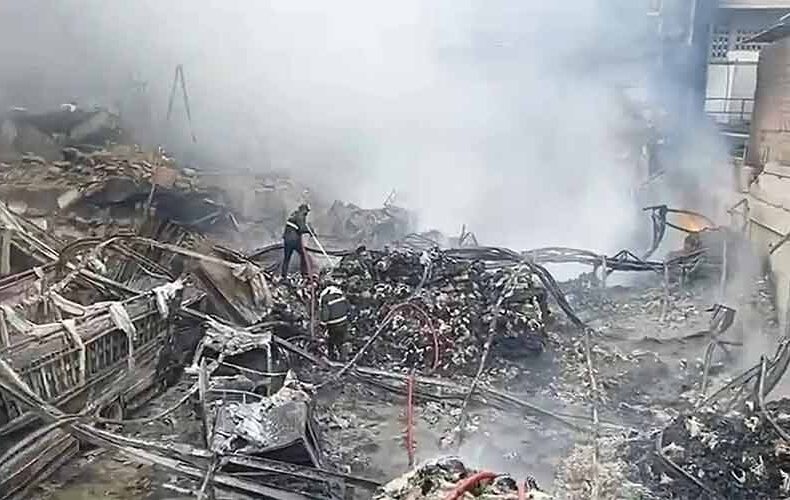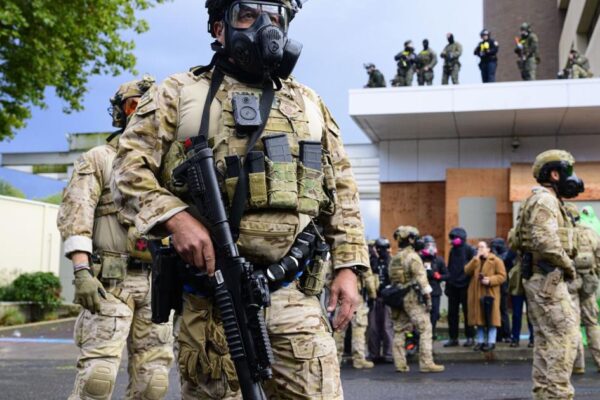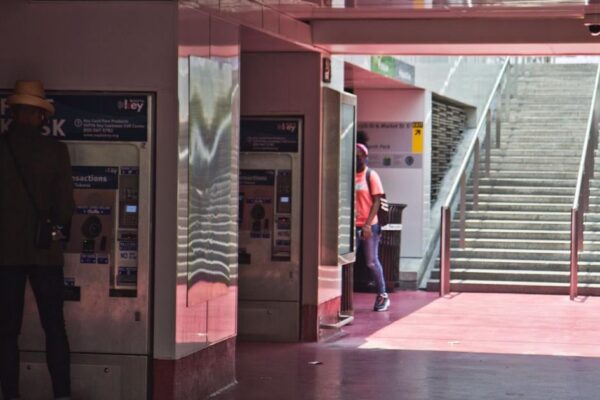
Playing with fire
In recent days, Karachiites have witnessed several tragic incidents of fire breaking out in multiple locations across the city. The most devastating of these occurred on September 9 at a garment factory in New Karachi. The fire raged for hours, injuring many workers and causing significant financial loss.
Earlier, in late August, at least six people lost their lives in a fire that erupted following an explosion in a warehouse located in a densely populated area near the Taj Medical Complex. The same month, a massive fire broke out in a factory in the Karachi Export Processing Zone near Landhi, injuring eight people and spreading to at least three other factories.
These tragedies have once again raised critical questions about why Karachi lacks a comprehensive and coordinated strategy to deal with fires effectively.
### Causes of Hazardous Fires
Electrical and plumbing defects in commercial and residential buildings are rarely addressed. Rather than investing in safety measures, building owners and management often force employees to continue working despite evident hazards such as leakages, sparks from faulty electrical wiring, and broken pipelines. Alarmingly, some buildings operate without legal electricity connections, leading to overloading and poor wiring that significantly increase the risk of short circuits.
Furthermore, serious flaws in the design and construction of certain buildings exacerbate the danger. Many lack emergency evacuation routes, have poor ventilation, and store flammable materials in unsafe locations — factors that contribute to loss of life during fires. Garment factories, sewing workshops, warehouses, and oil depots situated in crowded inner-city areas are particularly vulnerable.
### Safety Systems and Legal Action
Experts estimate that around 70 percent of residential, commercial, and industrial buildings in Karachi lack adequate fire safety systems. Essential safety equipment such as fire alarms, fire exits, and sprinkler systems are either missing or insufficient. Residents are generally not provided with emergency training, and public awareness campaigns on fire safety are virtually nonexistent.
While building bylaws mandate the presence of fire-fighting infrastructure—such as standpipes, water tanks, alarm systems, and fire-prevention walls—enforcement remains negligible. Across Pakistan, fires in buildings frequently result from poor infrastructure, weak enforcement of safety regulations, and widespread negligence.
According to the Fire Protection Association, approximately 3,000 fire incidents were reported in Karachi in 2024 alone. The association also points out that the Fire Department is under-resourced and that no effective fire-fighting strategy has yet been formulated.
### Urban Governance Challenges
A key question remains: why are government agencies unable to take adequate measures to reduce the risk of fires in residential and commercial areas?
Several factors contribute to this problem, including corruption, political and administrative pressure that hinder uniform enforcement of laws, limited resources, and the lack of capacity within firefighting agencies. Moreover, the existing fire brigade services are grossly inadequate in both number and facilities relative to the city’s massive population.
The situation is further worsened by delayed fire brigade response times and insufficient access to water and firefighting equipment during emergencies.
### Increasing Risk Due to Unplanned Development
Experts identify unplanned development and the absence of safety measures as primary causes for the rising number of fires in warehouses, markets, and stores in Karachi. Most warehouses and commercial centers are constructed without formal planning, lacking essential fire-extinguishing water systems, fire hydrants, alarms, and ventilation.
Many buildings utilize poor and flammable construction materials, allowing fires to spread rapidly. Additionally, warehouses located in old commercial centers such as Empress Market, Bolton Market, and New Karachi often sit on narrow streets that are inaccessible to fire brigade vehicles, causing significant delays during emergencies and exacerbating fire damage.
Compounding these challenges, many warehouses and markets lie near high-tension electricity lines or have outdated and faulty wiring. Overloading and short circuits are the most common causes of fire in these settings. These centers store large quantities of clothes, plastics, chemicals, oil, and other flammable materials without proper zoning or safety protocols, so even a minor spark can trigger major explosions or severe fires.
The absence of emergency exits and safe evacuation routes makes it even harder for firefighters to access buildings and rescue trapped individuals.
### Weak Supervision and Coordination
Experts blame weak supervision by city administration for these hazardous conditions. There is a lack of effective coordination among the Building Control Authority, the Department of Industries and Commerce, and the Fire Brigade. Safety audits of buildings are rarely conducted, though they should be routine.
Deterrence through strict fines and punishments in case of violations is also crucial. Since these penalties are seldom enforced, building owners often avoid investing in essential security measures to save costs.
### Steps Towards Prevention
The government must prioritize fire safety measures. The first step is to collect accurate and comprehensive data. The statistics department and local government should collaborate to conduct regular surveys of factories, warehouses, and residential buildings, especially in old and densely populated areas, to identify defective structures through safety audits.
Fire alarms and sprinkler systems should be mandatory standards. During construction and renovation, incorporating emergency exits must be compulsory.
### Institutional and Community Engagement
Engaging institutions and the community is vital for improving fire safety. Trade associations, civil society, labor unions, and the media should work together to raise awareness and promote action.
Investing in fire brigades and building their capacity is essential. Procurement of modern fire tenders and equipment, alongside personnel training to effectively manage large-scale incidents, can significantly improve response capabilities.
### Promoting Public Awareness
Public fire safety training should be mandatory in schools, colleges, and workplaces. Awareness campaigns can empower citizens with knowledge to prevent fires and respond appropriately during emergencies.
### Conclusion
Recent fires in Karachi highlight the urgent need for a comprehensive fire safety policy backed by strict legislation and effective enforcement. Unless timely and decisive measures are taken, the frequency and severity of such incidents are likely to increase, putting countless lives and livelihoods at risk.
It is imperative that all stakeholders come together to safeguard Karachi against these avoidable disasters.
https://www.thenews.com.pk/tns/detail/1345122-playing-with-fire
You may also like
更多推荐
You may be interested
Clovis Police now using drones as ‘first responders’
**Clovis Police Department Introduces Drone First Responders to Enhance Public...
Video: 6 houses buried, 7 people missing as cloudburst strikes Uttarakhand’s Chamoli
Six houses were buried and seven people are missing after...
Delhi Police Arrest PCR Van Driver Following Death Of Tea Stall Owner Near Ramakrishna Ashram Marg Metro Station
New Delhi: Delhi Police have arrested PCR van driver Constable...
 The New York Times
The New York Times
- California Gets Heavy Rain, Snarled Travel and Power Outages for Christmas 2025 年 12 月 25 日 Alexander Nazaryan and Thomas Gibbons-Neff
- $1.817 Billion Powerball Jackpot Won by Single Ticket in Arkansas 2025 年 12 月 25 日 Dan Watson and Rylee Kirk
- Christmas Around the World in Photos 2025 年 12 月 25 日 The New York Times
- Why Russia Is Likely to Reject the New US-Ukrainian Peace Plan 2025 年 12 月 25 日 Ivan Nechepurenko
- No Power, No Heat, No Water: Odesa’s Days of Hell Under Russian Fire 2025 年 12 月 25 日 Kim Barker, Oleksandra Mykolyshyn and Laetitia Vançon
- Prominent Leaders Amplify Disinformation About Brown University Shooting 2025 年 12 月 25 日 Steven Lee Myers
- With Airspace Closed, a Lonely Christmas for Many Venezuelans 2025 年 12 月 25 日 Annie Correal
- Estonia’s Man on Capitol Hill Is on a Charm Offensive 2025 年 12 月 25 日 Adam Sella
- Pope Leo Makes Christmas Call for Dialogue to Address World’s Conflicts 2025 年 12 月 25 日 Motoko Rich
- King Charles Urges ‘Compassion’ and Finding Strength in Diversity in Annual Christmas Message 2025 年 12 月 25 日 Lizzie Dearden



Leave a Reply